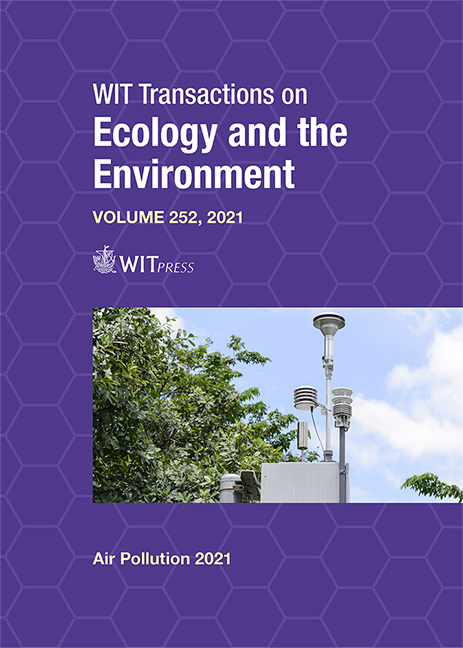AIR QUALITY OBSERVATIONS IN THE EAST OF QUITO, ECUADOR IN 2018–2020: COMPARISONS BETWEEN PRE- AND POST-COVID-19 CONDITIONS
Price
Free (open access)
Transaction
Volume
252
Pages
9
Page Range
177 - 185
Published
2021
Paper DOI
10.2495/AIR210161
Copyright
Author(s)
MARIA CAZORLA
Abstract
Ozone, NO, NO2 as well as meteorological observations are continuously monitored at the Atmospheric Measurement Station (EMA, Spanish acronym) at Universidad San Francisco de Quito (USFQ) in Ecuador. The monitoring station is sited in Cumbayá, an Andean urban area in the valley east of Quito. In 2020, namely after the onset of the COVID-19 pandemic, primary emissions decreased due to various mobility restrictions and strategies applied in the city to try to curb the spread of the disease. These changes had an impact in ambient levels of NO and NO2 (collectively called NOx ), which were recorded at EMA USFQ. On the other hand, an increase in ozone was detected when compared with measurements from previous years. In this work, the differences in NOx and ozone in 2020 with respect to levels observed in 2018 and 2019 are explored. To this end, an analysis that includes 10-minute measurements of the three species is presented along with meteorological data for 2018–2020. In addition, the typical diurnal patterns of the three species are analysed under regular traffic conditions as well as under different mobility restrictions adopted in 2020. Moreover, the seasonality of the three species is characterized within the context of weather patterns in the study region. Finally, an explanation of the observed levels of ozone, based on insight gained recently in regard to ozone production mechanisms in Quito, is presented.
Keywords
ozone, NOx, air quality, Quito, Ecuador, COVID-19





